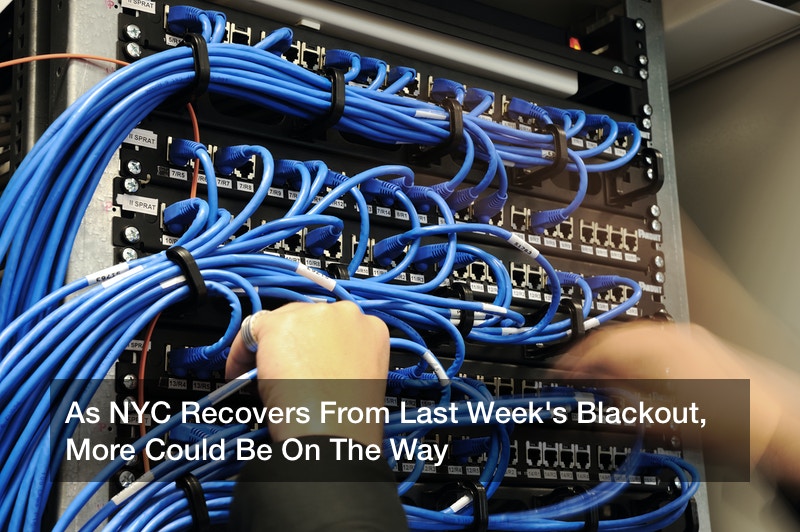
 The city that never sleeps experienced a rare phenomenon just less than a week ago when a blackout left a large part of Manhattan dark for hours. With an intense heat wave expected to hit New York on Friday, July 19, the city’s largest utility company warns that more blackouts could happen over the weekend.
The city that never sleeps experienced a rare phenomenon just less than a week ago when a blackout left a large part of Manhattan dark for hours. With an intense heat wave expected to hit New York on Friday, July 19, the city’s largest utility company warns that more blackouts could happen over the weekend.
Consolidated Edison, more colloquially known as Con Ed, received the brunt of the frustration during the blackout on July 13. Typically 90% of searchers haven’t made up their mind before beginning an online search, but a blackout of this size leaves Con Ed open to criticism regardless of research. Over 72,000 customers within the 30 blocks that stretch from the Upper West Side to Times Square lost power beginning at 6:47 p.m. and didn’t see it restored until nearly midnight.
The blackout turned off the lights at many Broadway theaters, shut down a Jennifer Lopez concert at Madison Square Garden, powered down traffic lights, and stopped subways and elevators. While many of the performance venues made the best of the situation with impromptu performances on the street, the lack of power left many residents of the city’s other four boroughs stranded in Manhattan with no subways to get them home and cars cautiously navigating the light-less streets.
Now, Con Ed representatives are warning the people of New York City that it could happen all over again this weekend. Temperatures are expected to soar into the upper 90s, causing city-dwellers to turn on air conditioners and HVAC units, which last an average of 12 years, to cope with the hottest days yet this summer. While residents find relief in the cool air, Con Ed workers will be on-call.
“We expect that there could be service outages. Those things happen during heat waves. Our crews are ready to respond. We are going to be prepared for this. It’s going to be intense,” Con Ed spokesman Mike Clendenin told WPIX-TV.
According to Clendenin, Con Ed invests $2 billion every year to prepare for the electricity demand that occurs when the temperatures spike.
Meteorologist Brian Donegan notes that the humidity will make it feel even hotter at around 100 to 110 degrees Fahrenheit all weekend. Rather than risk dehydration or heat stroke and becoming one of the average 50 visits per day that U.S. urgent care centers see, New York City residents will likely crank up their cooling devices. If they do so, entire swaths of the city could be without power yet again.
Although authorities don’t know exactly what caused last weekend’s disruptive blackout, they don’t believe that it was from overexerting the power system. They’ve so far traced it back to a specific transformer that seemed to cause a domino-like effect of mechanical failures.
Some experts, however, are concerned about the lasting effects the outage will have on the environment. According to Carl Pope, senior climate adviser to former New York City Mayor Michael Bloomberg, says that the carbon footprint of the city grows whenever there is a power failure. This is because of various inefficiencies and wastes that cascade through the system. For instance, any small scale manufacturing processes that the outage interrupted would have had to remake the item from scratch once the power returned.
Pope also points to the likelihood that many New Yorkers traveled by car when the subway trains suddenly stopped running. As a form of transportation dependent on gas and the 72,000 miles of crude oil lines in the United States, the increase in the use of Lyfts, taxis, and personal cars would have even more of an impact on the environment.
The final major environmental effect of a blackout in a major metropolitan center like New York City is the amount of food gone to waste in unpowered refrigerators. While there is daily environmental waste among places like the 10% of U.S. households that have leaks in their plumbing that can waste up to 90 gallons of water per day, a concentrated instance of waste like the blackout can be even more dangerous. Justin Wood, the director of organizing and strategic research for the New York Lawyers for the Public Interest, estimates that about 29 tons of food went into the trash as a result of last week’s blackout.
With the vast number of restaurants and food stores in Manhattan, Wood says that 29 tons is a conservative estimate. Those in these culinary locations would have feared that the food spoiled or else they simply didn’t sell it during the hours of the blackout. Wood notes that about 99% of this wasted food would have ended up in a landfill or been incinerated.
As all of these negative effects stack up on one another, the city is bracing itself for more blackouts this weekend. With residents and authorities preparing for the hots days ahead and the potentially chaotic outages that could come with them, everyone has just one thing on their mind: stay cool.



